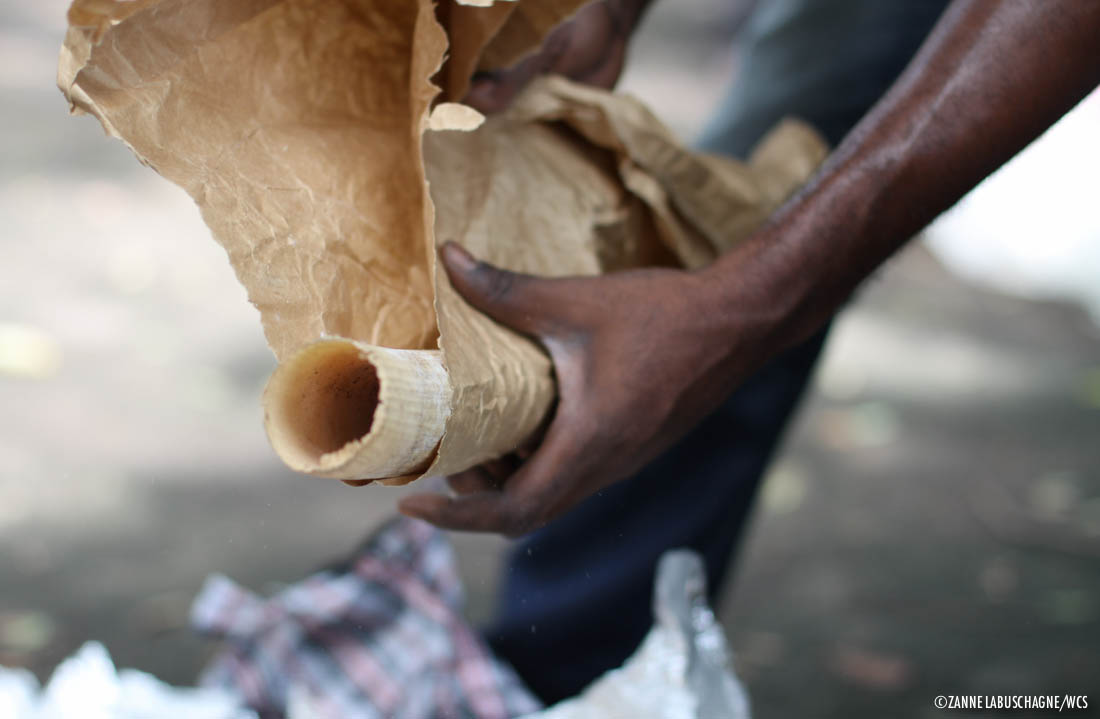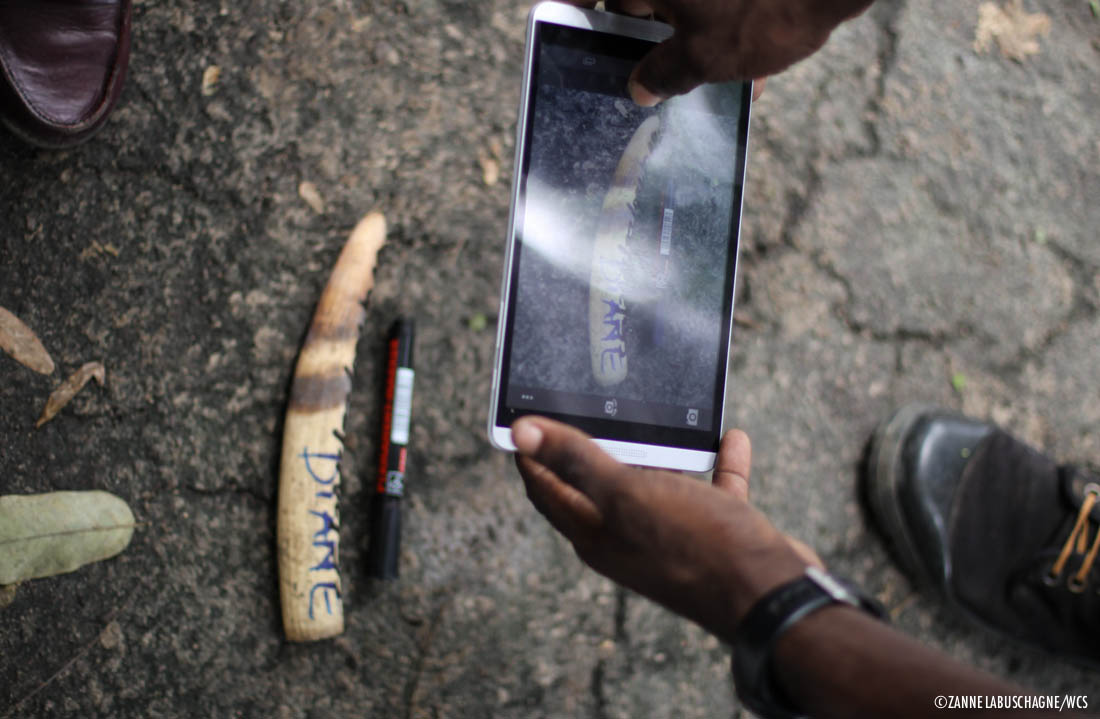
Ivory inventory
The annual inventory of all government-stockpiled ivory in the Republic of Congo took place this week in the country’s capital city, Brazzaville. A team of government staff responsible for ivory management from across Congo’s parks and regional offices, together with NGO partners, assembled to learn about the inventory process with technical and financial support from WCS and Stop Ivory. Together the group counted, weighed, measured and photographed the stockpiled ivory and entered this data into the country’s national ivory database. Congo is one of eight African countries using the digital Stockpile Management System (SMS), developed by Stop Ivory and a Kenyan software developer. National parks and governmental ivory stockpiling facilities have been provided with tablets with this software installed to facilitate the entry of information on all seized ivory into the country’s ivory database.
”The new inventory system helps authorities to better keep track of the amount and location of the country’s ivory stock and reduces the possibility for corruption as all ivory is marked with a unique code and electronically entered into the central database.
Storing large amounts of a valuable illegal product is risky, especially when seizures take place nationwide requiring for ivory to be stored in several different locations across the country. The new inventory system helps authorities to better keep track of the amount and location of the country’s ivory stock and reduces the possibility for corruption as all ivory is marked with a unique code and electronically entered into the central database. The stockpile is then monitored and inventoried to ensure all the ivory is accounted for at all times.

As of 2015 an inventory of CITES member states’ ivory stockpiles, before the 28th of February each year, is mandatory. Members failing to meet these requirements could expose themselves to the risk of trade sanctions for CITES-listed species. Last year the Republic of Congo was one of a minority of CITES members to have completed and reported their inventory, in the run up to Congo’s ivory burn carried out in April 2015 where nearly five tons of seized ivory was incinerated. The timely completion of Congo’s National Elephant Ivory Inventory in 2016 shows a continued willingness to keep up a high standard of security and accountability for the country’s ivory stockpile.
At the 66th CITES Standing Committee this January, the Republic of Congo declared that it has joined the rapidly growing Elephant Protection Initiative (EPI), becoming the 11th Member Country. Congo has committed to put all ivory beyond economic use.

